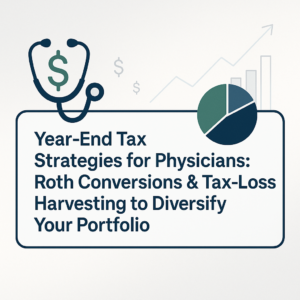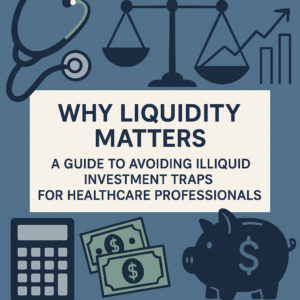In today’s interconnected world, global markets are evolving rapidly. Recent trends have shown notable performance by U.S. stocks, making them attractive to many investors. However, it’s crucial for investors, especially young professionals like healthcare workers, to recognize the value of international diversification. This strategy is essential for mitigating risks and maximizing long-term returns.
Performance of U.S. Stocks vs. International Equities
Over the past 15 years, U.S. stocks have generally outperformed their international counterparts, leading investors to favor domestic investments. This is driven by behavioral biases like recency bias—the tendency to give more weight to recent events when making investment decisions.
However, this over-reliance on domestic markets can be risky. For instance, Japan experienced a significant market downturn in the early 1990s, referred to as the “Lost Decade.” During this period, the Nikkei 225 index plummeted from its peak, taking decades for the market to recover. This example highlights the dangers of concentrating investments in a single market.
To illustrate, let’s consider a timeline of major global market events over the past 15 years and their impacts on diversified and non-diversified portfolios:
- 2008 Financial Crisis: Globally diversified portfolios showed greater resilience and faster recovery compared to U.S.-centric portfolios.
- 2011 European Debt Crisis: Highlighted the importance of spreading investments across various regions.
- 2015-2016 China Market Turbulence: Emphasized the risks of over-relying on any single market.
- 2020 COVID-19 Pandemic: Demonstrated the benefits of diversification as different markets recovered at varying paces.
The Pitfalls of Home-Country Bias
Home-country bias is another behavioral bias that influences investment decisions. This bias manifests when investors prefer domestic investments over international ones, believing their home market is safer and more likely to perform well. This can prevent investors from reaping the benefits of diversification, exposing their portfolios to unnecessary risks.
Valuation and Investment Returns
Valuation is a key driver of investment returns. Tools like the CAPE 10 metric (Cyclically Adjusted Price-to-Earnings ratio) can help investors assess market valuations. Currently, U.S. markets are experiencing high valuations, which may suggest lower expected future returns. Conversely, international markets, with potentially lower valuations, may offer higher expected returns. This reinforces the importance of including international equities in a diversified portfolio.
Maintaining a Long-Term Perspective
Investment success is often driven by maintaining a long-term perspective. While short-term market fluctuations can be unsettling, a diversified portfolio can provide resilience and support long-term goals. Understanding and addressing behavioral biases is crucial for staying disciplined and focused on long-term investment success.
Historical Performance and Risk-Adjusted Returns
Research has consistently shown that globally diversified portfolios tend to provide better risk-adjusted returns compared to those concentrated in a single market. For example, during the global financial crisis of 2008, diversified portfolios, while not immune to losses, demonstrated better resilience and faster recovery compared to those heavily concentrated in U.S. stocks.
The Impact of Diversification on Long-Term Recovery
Diversification does not protect against short-term crashes but plays a significant role in long-term recovery. By spreading investments across various markets, industries, and asset classes, investors can reduce the impact of adverse events in any single market. This strategy enhances the overall stability and growth potential of a portfolio over time.
Addressing Common Concerns
Implementation Costs and Accessibility
One common concern about international diversification is the potential for higher implementation costs. While it’s true that investing in international markets may involve additional expenses, the benefits often outweigh the costs. Investors should consider the long-term advantages of a diversified portfolio and seek cost-effective solutions, such as low-cost index funds and exchange-traded funds (ETFs).
Potential Risks: Currency Fluctuations and Geopolitical Factors
International investments come with their own set of risks, including currency fluctuations and geopolitical factors. For example, an investment in a European index fund may be affected by currency exchange rates and political events in Europe. It’s important to be aware of these risks and consider them in your overall investment strategy.
Balancing Costs and Benefits
Balancing implementation costs with the strategic advantages of diversification is crucial. It’s important to focus on the overall value that a diversified portfolio brings to long-term financial security. By carefully selecting investment vehicles and prioritizing cost-effective strategies, investors can achieve global diversification without compromising their financial goals.
In conclusion, international diversification is a vital component of modern portfolio management. Despite the recent performance of U.S. stocks, relying solely on domestic markets can expose investors to unnecessary risks. By embracing global diversification, young professionals can mitigate risks, optimize long-term returns, and achieve greater financial resilience.
Remember, while global diversification may not always provide immediate protection, its benefits become clear over the long term. Educating oneself on these principles is essential for maintaining discipline and staying focused on achieving long-term financial goals.






